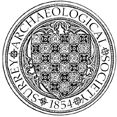Former Marconi Site, Addlestone
Evaluation by M Dover of SCAU in advance of commercial and residential redevelopment. A single undated linear feature, likely to be prehistoric, was revealed, although generally the site had undergone large-scale truncation in the past. A subsequent excavation revealed gullies and ditches belonging to settlement enclosures, a number of pits, and a large waterhole. Pottery, including large parts of individual vessels, as well as loomweights and other finds dating to the Late Bronze Age/Early Iron Age transition were recovered.


